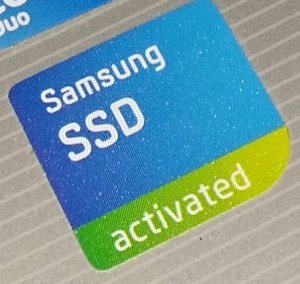 By default, Owncloud is configured to handle files up to a size of 512 MB. While that’s probably good enough for most, I do run into this limit rather often. There are instructions how to increase the limit from an Owncloud point of view but when I recently wanted to transfer a 2.7 GB file my setup failed outside of Owncloud. It took me a bit before I found out how to fix it so I thought I put together all things I have now learned about how to configure a system for large file transfers in Owncloud with a number of security and privacy tips thrown in for good measure.
By default, Owncloud is configured to handle files up to a size of 512 MB. While that’s probably good enough for most, I do run into this limit rather often. There are instructions how to increase the limit from an Owncloud point of view but when I recently wanted to transfer a 2.7 GB file my setup failed outside of Owncloud. It took me a bit before I found out how to fix it so I thought I put together all things I have now learned about how to configure a system for large file transfers in Owncloud with a number of security and privacy tips thrown in for good measure.
Category: Uncategorized
Time To Switch From Opera to Firefox On Mobile – At Least For Me
 Ever since I discovered last year that Opera’s web browser on my smartphone was responsible for strange queries to my web server from China to generate a thumbnail image (see ‘When Opera Calls From China‘) it had been at the back of my mind that Opera is not open source and hence I have little trust in it. These days it also seems like Opera is going to be sold to a Chinese consortium which would make it even less attractive for me to continue using it. Time to change to another browser on my Android based devices then. How about Firefox?
Ever since I discovered last year that Opera’s web browser on my smartphone was responsible for strange queries to my web server from China to generate a thumbnail image (see ‘When Opera Calls From China‘) it had been at the back of my mind that Opera is not open source and hence I have little trust in it. These days it also seems like Opera is going to be sold to a Chinese consortium which would make it even less attractive for me to continue using it. Time to change to another browser on my Android based devices then. How about Firefox?
Continue reading Time To Switch From Opera to Firefox On Mobile – At Least For Me
MouseJack Vulnerability – Have You Already Patched Your Mouse?
Quite strange that only Bruce Schneier has picked up on this so far but researches have developed a proof of concept of how to exploit HID (Human Interface Device) USB dongles for wireless mice and keyboards to accept keystrokes from rouge third party transmitters.
Continue reading MouseJack Vulnerability – Have You Already Patched Your Mouse?
Eduroaming in Utrecht
 Eduroam is a great Wi-Fi login system for students and researches that works with certificates for secure access of on-campus Wi-Fi networks and has the added benefit that Eduroam users can attach to any other Eduroam network around the globe without changing their Wi-Fi configuration. That’s the theory and paper is patient. So when I recently was at the University of Utrecht in the Netherlands I tested if the theory holds up with an Eduroam setup of the University of Vienna.
Eduroam is a great Wi-Fi login system for students and researches that works with certificates for secure access of on-campus Wi-Fi networks and has the added benefit that Eduroam users can attach to any other Eduroam network around the globe without changing their Wi-Fi configuration. That’s the theory and paper is patient. So when I recently was at the University of Utrecht in the Netherlands I tested if the theory holds up with an Eduroam setup of the University of Vienna.
What Is My Theoretical Top Internet Speed?
Theoretical Internet speeds in fixed line and mobile networks keep rising, which is a nice thing. Unfortunately, round trip delay times are not decreasing at the same rate, mostly due to physical limits these days which at some point will limit the maximum throughput of a single TCP stream no matter how fat the pipe is and how fast a server can deliver data. So where is this limit?
Good Advice To Block, Detect and Mitigate Ransomware Damage In Companies
Today I came across this great article by Robert Penz in which he describes measures how companies can reduce the risk of Ransomware encrypting their files on network shares and other devices in the local network. Also, he describes how a company can prepare itself in case it still happens to reduce their downtime as much as possible. I found one of his suggestions of particular interest: Snapshots of network shares.
Continue reading Good Advice To Block, Detect and Mitigate Ransomware Damage In Companies
One German LTE Network Operator Now On-Air with 50 MHz
When it comes to investigative reporting in the telecommunication domain, German telecoms news website Teltarif certainly is at the forefront. Recently they noticed that the public network coverage maps of one of the network operators in Germany now show that in many cities, they have deployed LTE in three different frequency bands.
Continue reading One German LTE Network Operator Now On-Air with 50 MHz
The Samsung SSD Bug Caught Me Again
LTE And The Number Of Simultaneously Connected Users
Recently I read this very interesting post that analyzed how many users can be connected to an LTE eNodeB simultaneously. As the author says in the article there is no single answer to this as many factors are playing into the game. From a pure uplink signaling point of view there can be well over 1000 users simultaneously in RRC-Connected state. In practice I wouldn’t be surprised if networks set that number way lower as that number is far too high to give anyone a halfway decent speed experience. So how many might there be connected simultaneously to a base station today? Let’s play with some numbers.
Continue reading LTE And The Number Of Simultaneously Connected Users
So Glibc Is Not Statically Linked!?
When I first heard about the news of a serious security vulnerability in glibc I thought that I would soon see a lot of programs of my Linux distributions being updated. That’s because I faintly remember that I once read somewhere that in Linux, libraries are often compiled into the application instead of dynamically linked at runtime. But I guess that was not quite true, at least not for glibc anyway. So far I’ve only seen an update of the glibc library itself. Since then no other programs have been updated due to statically linking that library. So if that holds true we might have been luckier than I thought. Would be nice for a change!
